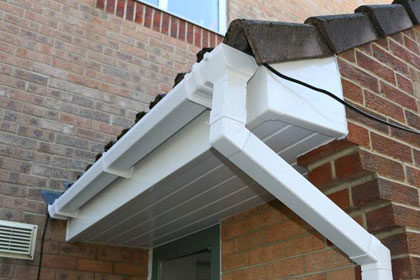 Is Your Guttering Working After Winter?
Is Your Guttering Working After Winter?
One of your roof’s main jobs is to ensure that the rain falling over your house gets directed safely down into the drains. The process is most obvious with a pitched roof, but even a flat roof should be designed to facilitate water running off correctly, rather than pooling.
And that’s where your guttering comes in.
What Does Your Guttering Do?
Your guttering consists of the gutters around the edge of your roof and downpipes that feed into the drain. Traditionally, these were made of metal, but modern guttering is normally plastic.
The gutters collect any water that falls onto your roof. Without these, the water might pool on the roof itself or, more likely, on the ground below, potentially getting down into the foundations and compromising them.
What Can Go Wrong With Your Guttering?
Unfortunately, you can’t simply leave your guttering and assume it will be getting on with its job efficiently. For one thing, both gutters and downpipes can get clogged up with debris. This is particularly a problem in autumn when the leaves are falling and blowing about, but high winds (common in winter) can result in twigs, soil and other materials being deposited in the guttering.
Blocked gutters mean that the water will pool on the roof, putting extra weight on the roofing materials, as well as giving it time to find every slight crack and get into your roof space. This can eventually rot your timbers, as well as cause the growth of mould and mildew on the walls.
In addition, your gutters and pipes can crack, or the joints can pull apart. This will mean that, instead of going safely into the drain, the water will fall around your home, allowing it seeps down and weaken the foundations.
Inspecting and Repairing Your Guttering
You can sometimes tell at a glance that your guttering needs to be repaired because there’s water pooling on the ground beside the walls. However, you shouldn’t rely on waiting for this. It needs to be inspected several times a year, including autumn and early spring, as well as any time after high winds or a storm.
If you’re an experienced DIYer and used to working at heights, as well as having a good ladder, you may be able to make the inspection yourself. You should look out for cracks or gaps in the joints, which will need to be repaired or replaced.
You’ll also need to go around your gutters with a brush, clearing out all the debris, as well as rodding your downpipes to make sure they’re clear of blockages. However, if you don’t feel confident doing the inspection, the maintenance or both yourself, the best thing is to have it done regularly by professionals. Give us a call to find out how we can help you.
Learn how to care for your roof before and after storms here.









